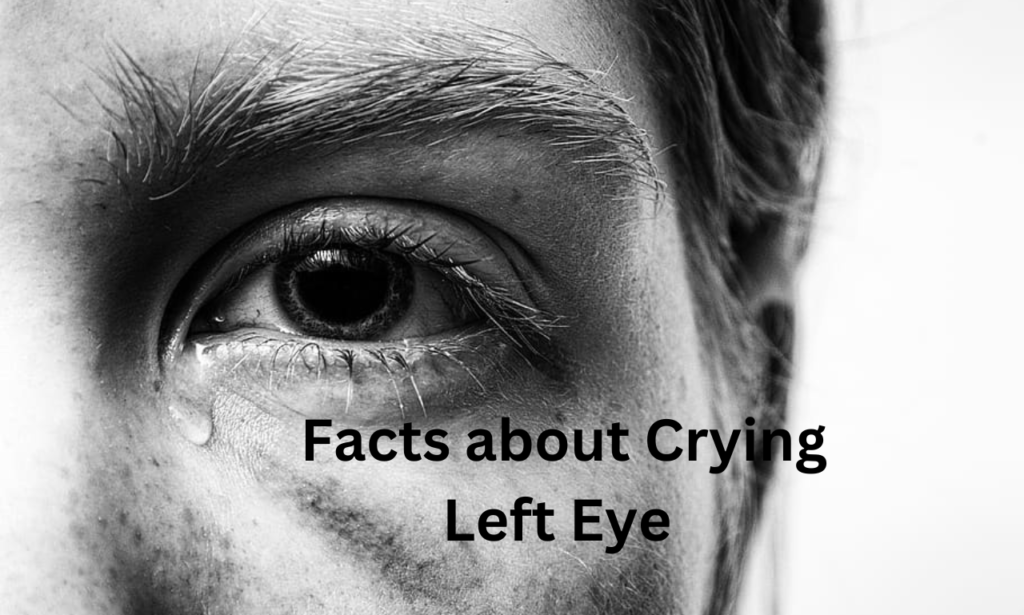Our Location
Islamabad, Pakistan
Crying is a complex and witching human gesture that holds deep emotional implications. Within this composition, we will explore the interesting circumstance of slipping and crying from the left eye.
By searching into psychological shoes and scientific investigations, we will uncover some psychological facts about Crying Left Eye and facts behind this characteristic representation of feelings.
People cry for a variety of reasons when they feel different emotions. Tears can be therapeutic for self-soothing, releasing stress and discomfort, elevating mood, and more.
It’s natural to cry, yet contrary to common assumption, men cry more frequently than women. In the US, women weep on average 3.5 times each month, compared to 1.9 times for men.

Prepare yourself for an immersive journey through 12 psychological facts about crying left eye, covering everything from physical triggers to the logical effects.
Crying in the left eye might arouse sympathetic responses from others, leading to emotional care and understanding. It nurtures social association and a feeling of contributed feelings.
When crying emotionally, the left eye has been seen to encourage further crying than the right. Emotional processing and hemisphere detail in the brain may be related to this domination.
The left eye’s crying when crying are confirmation of the depth and variety of human feelings. Our mindfulness of the complexity of the human psyche is enhanced when we comprehend the multidimensional nature of crying.
The left hemisphere of the brain, which is dominant in emotional processing, may play a part in the regularity of crying from the left eye. The complicated connection between brain effort and gash product sheds light on the cerebral foundations of this miracle.
Personality traits, similar to emotional perceptivity and understanding, can influence the frequency and strength of crying from the left eye. Individuals with advanced emotional mindfulness may be more prone to this form of crying.
Certain medical conditions, similar to blocked tear tubes or dry eye patterns, can disturb cry product and potentially impact the circumstance of crying from the left eye. Consulting a medical expert can help recognize any underpinning causes or enterprises.
Crying exfoliate from the left eye keeps a unique communicative control, frequently conveying feelings more efficiently than words. The authenticity and susceptibility expressed through crying can nurture deeper emotional connections.
Crying from the left eye can influence mood and provide cerebral relief. It allows individuals to release pent-up feelings and see a sense of emotional lightness.
In certain societies and civilizations, crying from the left eye is considered a symbol of emotional legitimacy and vulnerability. The left eye is occasionally related to the heart and is supposed to imitate honest feelings.
The survey suggests that women tend to cry more continuously and produce additional crying than men. The frequency of crying from the left eye may also differ between genders.
An intense emotional relief and a cathartic experience are often associated with left-eye crying. Crying from the left eye is permissible to have a deeper emotional significance.
Crying from the left eye can provide a cathartic release and help palliate stress and emotional stress. Crying contains stress hormones, and failing them may indorse emotional well-being.

These are some random facts about crying with left and right eye;
Crying from the left eye is a witching miracle that reveals the depths of human feelings and the difficulties of our psychological perception. Through the above psychological facts about crying from the left eye, we’ve uncovered the complicated connections between tears, feelings, and the human experience. Whether falling crying of joy, pain, or sympathy, the act of crying offers an important path for emotional release, fixing, and connection with others. Embrace the authenticity of your feelings and let your crying speak their deep language.
Tears from the left eye are frequently connected to a strong emotional release and are occasionally thought to indicate a deeper emotional meaning.
Emotional processing and brain hemisphere specialization may have an impact on the left eye’s predominance in the generation of emotional tears.
Yes, several medical diseases can affect the production of tears and perhaps cause problems with left eye weeping. Examples of these conditions include dry eye syndrome and clogged tear ducts.
Studies indicate that women cry more often and shed more tears than men do, while individual differences may exist in the frequency of left-eye sobbing.
Images used from Unsplash